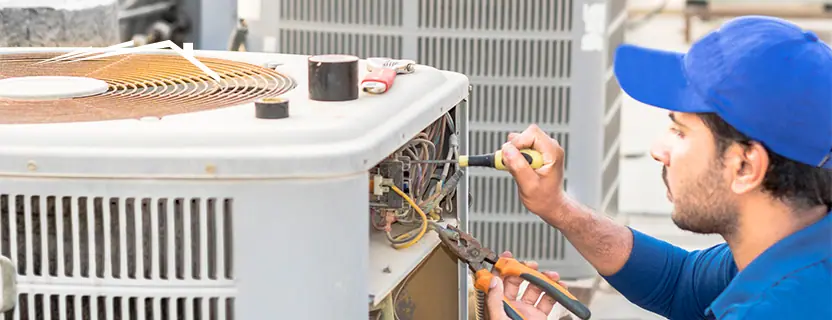Unknown Facts About 1 Source Portable Air
Unknown Facts About 1 Source Portable Air
Blog Article
Getting The 1 Source Portable Air To Work
Table of ContentsThe Basic Principles Of 1 Source Portable Air Excitement About 1 Source Portable AirThe Main Principles Of 1 Source Portable Air The 10-Second Trick For 1 Source Portable AirLittle Known Questions About 1 Source Portable Air.
Although recommendations may seem testing to track, there are means to pinpoint them swiftly and effectively. On social media sites, many individuals offer recommendations concerning HVAC technicians that are dependable and professional during an air conditioning setup, repair work or upkeep project. Since various other users can make comments, the process of establishing whether or not a company is worth seeking is never a problem. Ask if any one of them have had recent a/c work done and whether their experience was satisfactory. Several citizens experience delays when ac system solutions are needed during time-sensitive scenarios. This is why each a/c business's terms and plans have to be thought about to make certain that the technicians will certainly commute to the area or community where services are needed.
An organization that has constructed a strong credibility usually has very skilled professionals that totally comprehend how to take on cooling and heating tasks that involve modern and classic tools. Experienced specialists should constantly be taken into consideration throughout advanced maintenance and fixing tasks because the treatments that trained professionals execute are cost-effective. An additional advantage is that skilled AC business professionals never ever use improper substitute supplies in order to streamline repair tasks.
Some Known Questions About 1 Source Portable Air.
Yeah, at NEXGEN Air, we're expert Heating and cooling service technicians, however we understand that not everyone is. This is for true who have never had to deal with a HVAC problem.
A/c stands for heating, ventilation, and air conditioning. 9 standard components comprise a full central air and heat system. These components are the furnace, the warmth exchanger, the evaporator coil, the condensing device, refrigerant tubes, the thermostat, the ductwork, the vents, and the warmth pump. (Do not stress! We'll clarify these components thoroughly further down the listing.) The heating system is your heating device.
There are advantages and disadvantages to both, however we'll cover that in one more section. You can discover your furnace hiding in your cellar, garage, or utility closet. Your heating system's primary feature is to warmth air and relocate right into your air ducts to warm your home. (Fun fact: Furnaces are typically mistaken for boilers, yet they're separate devices). Below's an excellent example of a new Lennox heating system in an utility wardrobe.
While the heating system pushes hot air right into your ducts, the heat exchanger is the one converting cool air into hot air. One more resident inside the furnace, the evaporator coil takes in any type of warmth from air passing over it to blow awesome air through your vents and right into your home. Your condensing unit serves a similar objective as your evaporator coil yet you can find the condensing system outside, normally on the side of your residence.
The Facts About 1 Source Portable Air Uncovered

Your home heating, ventilation and cooling (HVAC) system is just one of the most essential systems in your home, running silently in the history to handle interior temperatures. Without cooling and heating, you 'd be handling freezing temperature levels in the winter season and unrestrainable warmth in the summer. Cooling and heating systems likewise ventilate your home, maintaining the air quality healthy for your household to breathe.
(https://onecooldir.com/details.php?id=290794)Keep reviewing for more information about choosing the appropriate cooling and heating system. There are several effective and cost effective choices offered for updating your a/c (Portable Air Conditioner). Choosing the ideal Cooling and heating system for your home depends on lots of personal elements and choices. A couple of things to consider consist of the kind of system, power performance and your budget.
The Best Guide To 1 Source Portable Air
Replacing your system with a similar arrangement is most likely one of the most cost-effective choice. Various other factors to consider include the climate and weather where you live and what fuel resources are readily available. If you want to discover more about just how heating and cooling systems operate in your area, ask regional professionals for guidance for those in the Southeast, selecting the most effective a/c system is likely your leading priority.

Based upon your info, they can help you make the most effective choice for your home. The appropriate sort of HVAC system depends upon your needs. Some A/c systems combine home heating and cooling in one plan, others operate with different kinds of devices. Some HVAC systems count on ductwork, while others are ductless.
Some systems warm water, while others make use of residual warm in the planet or air to run. The finest system for you relies on your budget plan and the tools readily available in your location. A/c systems are managed by a thermostat, where you can set and monitor temperature levels. If you buy a clever thermostat, you can change your a/c system over a phone app and incorporate it with various other wise modern technology around your home.
The 1 Source Portable Air Ideas
You don't need a massive Air conditioner system to cool a tiny residence. To discover the best alternative for you, identify the square footage of your home and after that compare that with size charts for the cooling and heating tools. If you get an air conditioner for a 900-square-foot home, basic standards suggest an unit with about 18,000 British thermal systems (BTUs).

Report this page